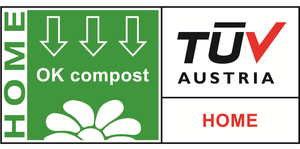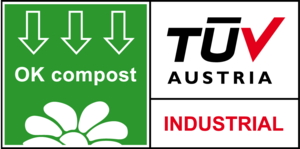Is a biodegradable disposable dish automatically compostable and vice versa? What is the difference between biodegradable and compostable dishes - plates, glasses, cutlery?
The question comes up again and again and the answers are often confusing. We have made a compilation of what is said and written, to give you a fair and simple version that will help you find your way.
These qualifiers, biodegradable and compostable, are defined in a European standard - NF 13432 - which specifies the difference between compostable and biodegradable. We take up the principles:
Biodegradable is the conversion of a product into carbon dioxide, water and humus. A material is considered biodegradable if it reaches 90% of biodegradation after 6 months. A biodegradable product decomposes and becomes bio-assimilable under the action of micro-organisms, oxygen, temperature, humidity and heat. There is no obligation on the size of the particles obtained.
All compostable products are necessarily biodegradable but not the other way around.
Indeed, to be compostable a material must respect additional criteria. Some biodegradable products, while deserving the qualification, are made of components that, most of the time with additives present in their composition, will fragment, degrade, in nature. But not disappear completely without being harmful or harmful.
A compostable product does not contain any of these components. To be considered compostable, the product must decompose at the same rate as plants. Items - plates, glasses, cutlery ... - made of fiber, pulp, wood, PLA, ... are compostable.
This also means that the compostable product can be transformed into a quality compost in an industrial composting installation. An industrial composting must respect precise norms (temperature 75°-80°, humidity rate 65-70% and oxygen rate 18-20%). Under these conditions, the composting process takes about 12 weeks. In a "home-made" compost, the temperature rarely exceeds 40° and the humidity varies according to the outside conditions.
So, composting is the optimization of the biodegradation process. It consists in provoking and maintaining, in the best possible conditions, what nature already does.
Here are the differences explained between biodegradable and compostable and why a compostable product is biodegradable but not the opposite.
At Zhongxin we are very attentive to these criteria which will become the new standards and motivate more eco-responsible behaviors. We thus present articles in product ranges - plates, glasses, cutlery, tablecloths, napkins - which present compostable qualities and thus biodegradable.
Zhongxin offers a variety of creative products created from renewable and recycled materials, such as bowls, cups, lids, plates and containers.
Post time: Dec-20-2021





